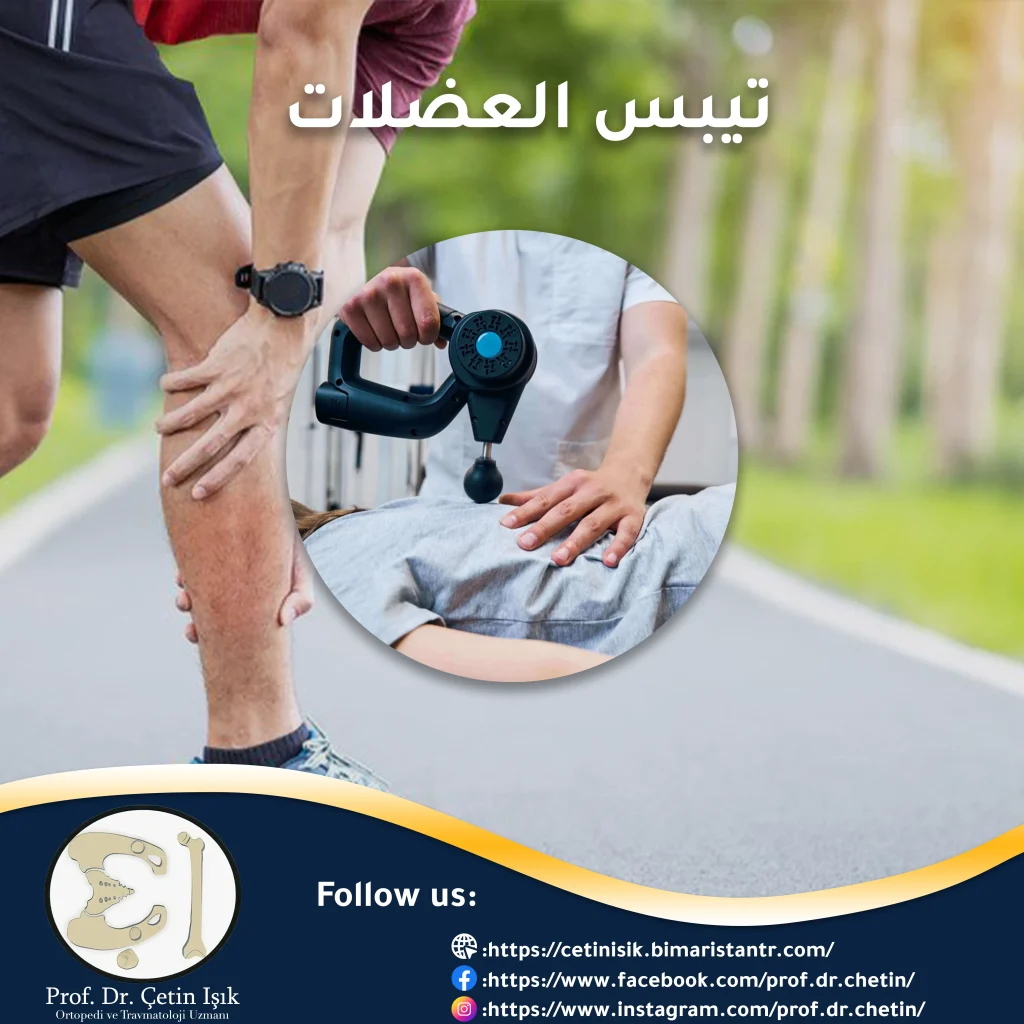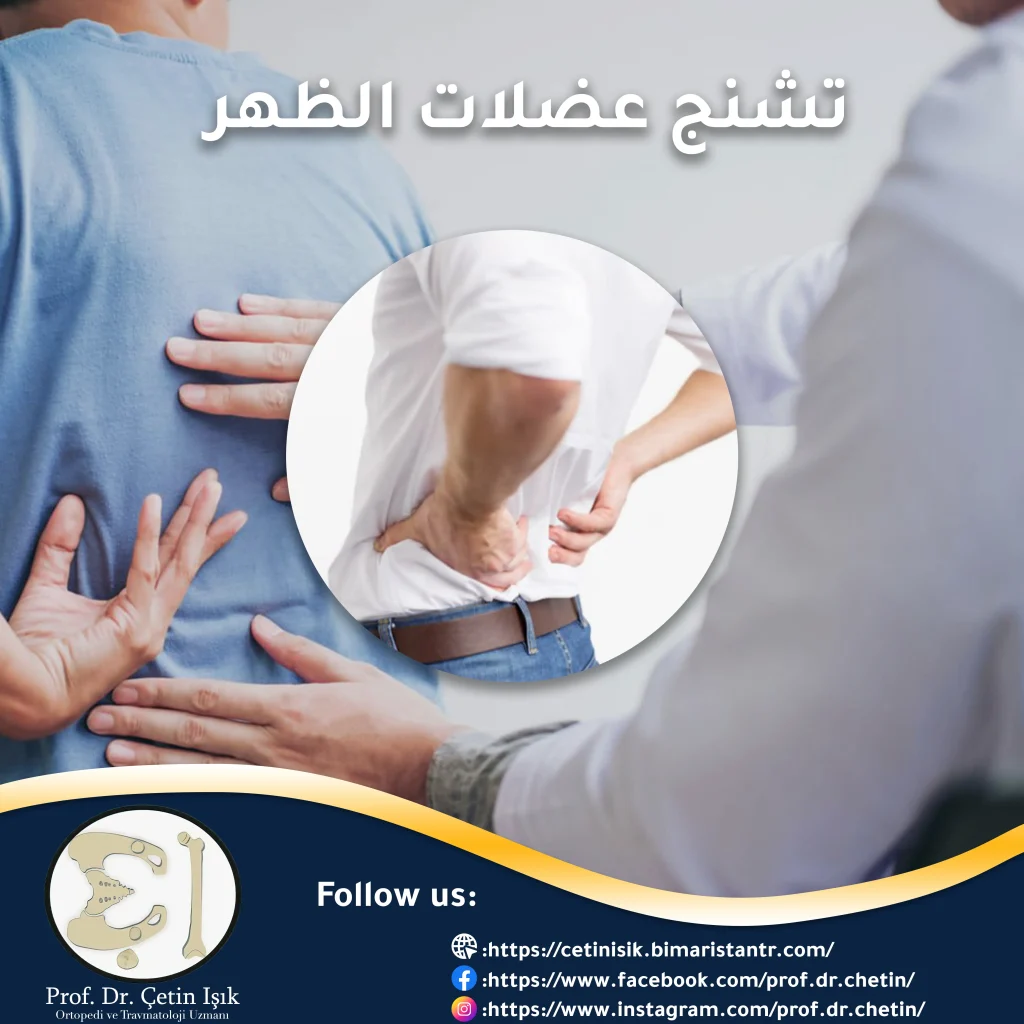spondylolisthesis is the movement of one of the vertebrae of the spine forward or backward and is common at the bottom of the spine in the lumbar vertebrae, knowing that it differs from a herniated disc.
Slipping can occur in any vertebrae of the spine; It may happen Sliding cervical vertebrae But it is considered rare, and on the other hand it is considered Lumbar slippage Especially with its degenerative type, it is common among females after the age of fifty who are overweight. In this article, we will learn what is spondylolisthesis? What are its types and degrees? The most important causes and symptoms of spinal slip, and what is the treatment of spondylolisthesis without surgery?
A glimpse of spondylolisthesis
Sliding vertebrae It is the movement of the body of any of the vertebrae of the spine from the body of the vertebra adjacent to it in any direction, as it may move forward or to other directions, which leads to instability in the spine.
The spondylolisthesis may not be asymptomatic at first, and then after that it may cause several pains in the lower back or in the legs. This is related to the nerve that is compressed, the location of the vertebrae, and the degree of slippage.
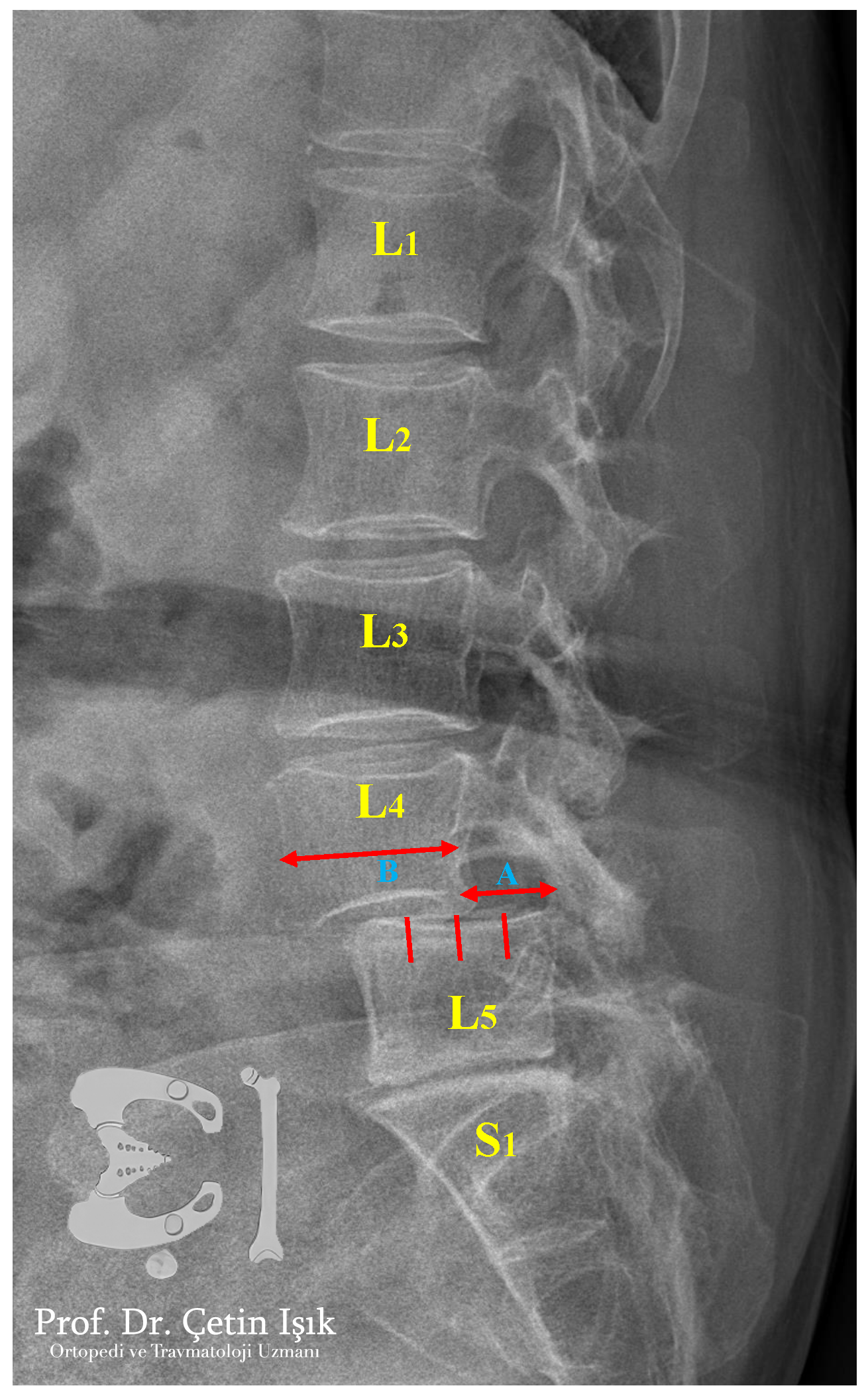
Types of spondylolisthesis
It is important to know the types of slipped vertebrae in order to know the treatment pattern that the patient should follow. These include common and less common patterns, which are:
Common patterns:
- Congenital spondylolisthesis: It is caused by a deformity in the bony vertebra since birth.
- Isthmic spondylolisthesis: This type occurs as a result of spondylolysis, which leads to weakness in the bone, and then the vertebrae break or crack.
- Degenerative spondylolisthesis: It is the most common type that occurs in the period of old age, where as a person ages, the cartilaginous disc located between the vertebrae loses most of the water in it and becomes thin, which causes spinal sliding.
Less common patterns:
- Traumatic spondylolisthesis: Where trauma and shocks cause the spondylolisthesis.
- Pathological spondylolisthesis: It results from some diseases such as osteoporosis or tumors.
- Post-surgical spondylolisthesis: which occurs after surgery on the spine.
Degrees of spondylolisthesis
The degree of slippage is determined by the doctor in order to know the degree of risk and determine the methods of treatment. Therefore, it is necessary to know the degrees classified within:
Low-grade spondylolisthesis
It includes the first and second degree, which often does not need surgery and is treated conservatively, is usually associated with slipped degenerative vertebrae that are located in the lower back in the lumbar vertebrae.
High-grade spondylolisthesis
It includes the third and fourth degrees, which are often treated surgically if the patient suffers from severe pain. These degrees may also be accompanied by a herniated disc, in which the cartilage discs are displaced.
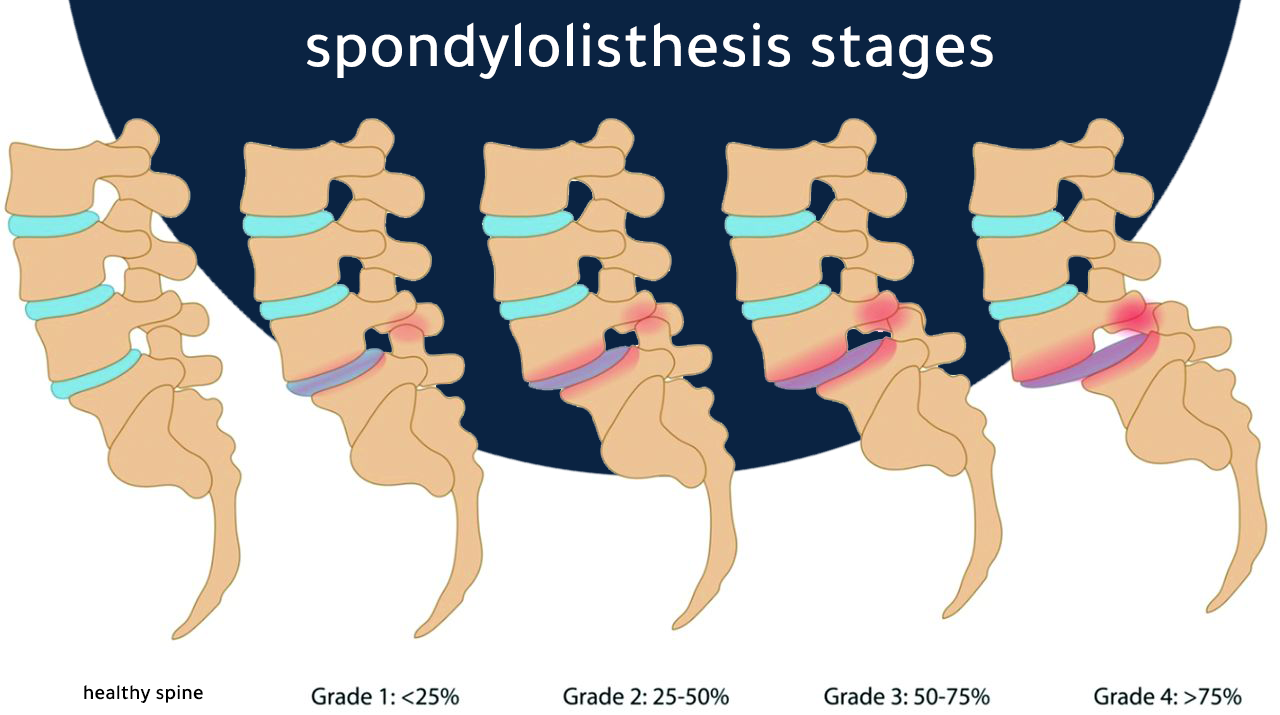
Reasons for spondylolisthesis
There are many reasons spondylolisthesis We will mention the most important causes of spondylolisthesis:
- getting old
- congenital anomalies
- Trauma and shock injuries
- Bony vertebrae fractures
- Doing some types of sports that increase lower back injuries, such as carrying weights
- injury bBone cancer
- Overweight; Where it results in great pressure on the vertebrae at the bottom of the spine, which leads to a herniated disc or sliding of the lumbar vertebrae
- Osteoporosis
Symptoms of spondylolisthesis
The symptoms of slipping differ according to the location of the slip, that is, the symptoms of slipping the cervical vertebrae (which are rare) are different from the symptoms of slipping the lumbar vertebrae, but there are common symptoms, the most important of which are:
- lower back pain Due to compression of the nerve roots when the lumbar vertebrae slip, or pain in its location in the neck when the cervical vertebrae slip, which is similar to the pain of a herniated disc.
- Muscle stiffness And her spasm
- The patient's pain, which increases with movement, also causes pain when the back is bent
- Pain spreading from both sides of the spine and lower back to the lower legs
- It may be difficult for the patient to stand or walk for long periods of time, feeling numbness in the foot
Complications of spondylolisthesis
Medical intervention is very important, not only in order to relieve the symptoms resulting from slipping, but also in order to protect the patient from serious complications that may affect him, the most important of which is cauda equina syndrome resulting from compression of the nerve roots in the lower back, which manifests as loss of sensation in the leg or loss of bladder control and paralysis.
Treatment of spondylolisthesis
There are several options for treatment, and the type of treatment varies according to the places of slippage, symptoms, and severity, treatment methods is:
Conservative treatment
- The patient should rest and not do heavy work.
- Avoid activities that cause damage to the spine and herniated disc, such as weight lifting.
- take Pain relieving medications or prescription non-steroidal anti-inflammatory drugs Relieve bone pain and muscles.
- Epidural topical steroid injection in the back to relieve leg pain and numbness.
- Physiotherapy in order to strengthen the muscles of the back, leg and abdomen.
Physical therapy
Prepare physical therapy It is important because it helps the patient to relieve symptoms and avoid surgery as much as possible, and there are several types of physical therapy such as treatment of spondylolisthesis with herbs or treatment of spondylolisthesis with cupping, but the treatment of slipped with muscle-strengthening exercises is scientifically proven.
There are many different exercises to strengthen the back muscles, but the most important ones are:
- Strength training exercises are suitable for strengthening the dorsal muscles and stabilizing the spine.
- Basic stability exercises to relieve pain from slipping.
- Walking exercise.
- Balance training which includes walking in different directions, hot spa therapy and coordination skills.
- Muscle endurance training.
- bending exercises for williams; Useful exercises that reduce lumbar extension, protect against herniated disc, and relieve lower back pain, including sliding exercises for the fourth and fifth lumbar vertebrae.
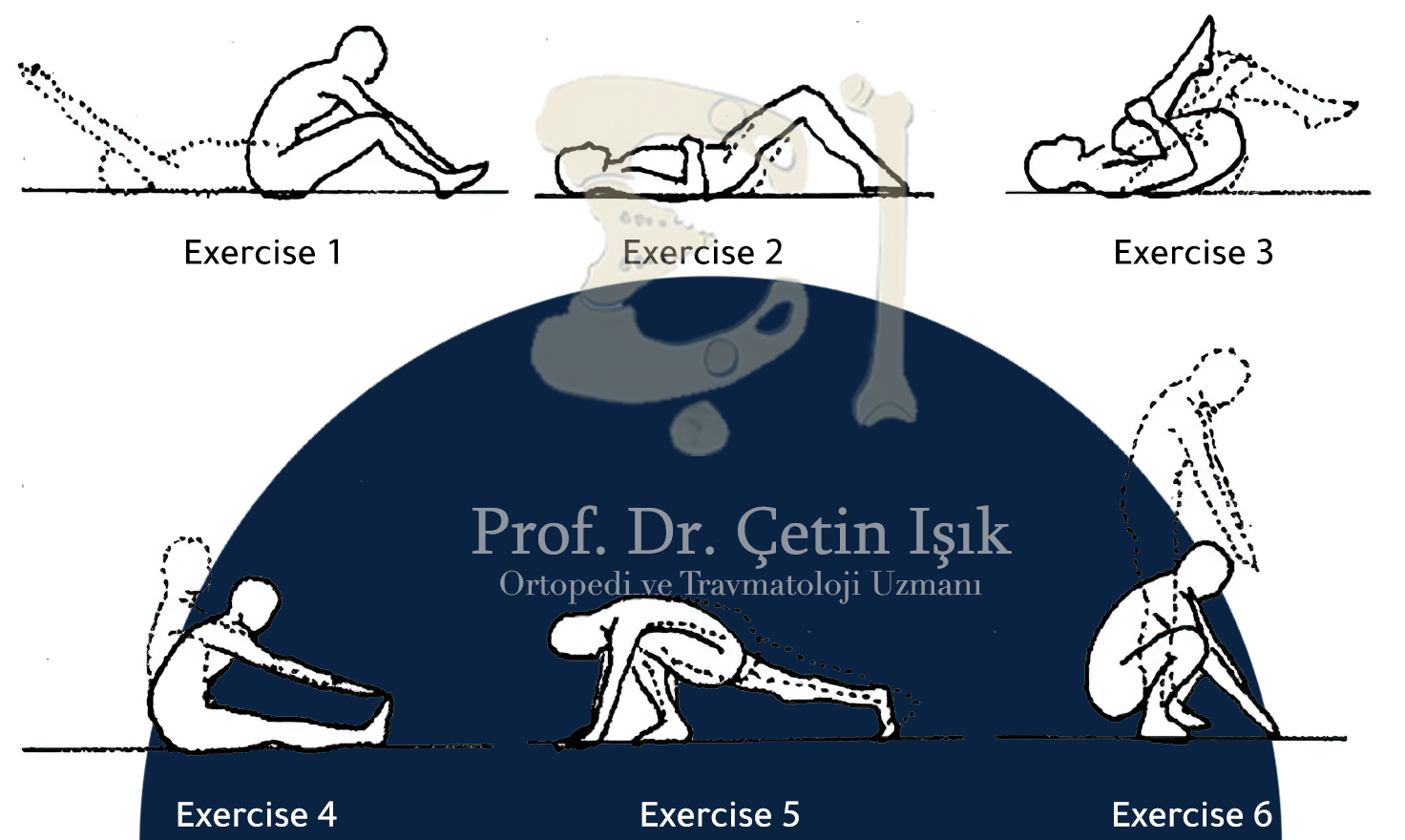
Surgical treatment
We resort to surgical treatment in cases of severe slippage associated with herniated disc and compression of nerve roots or in the event of failure of conservative treatment:
- There are several surgical options, such as fixation of the back vertebrae or a discectomy chondroprotective and fixation of the back vertebrae For the treatment of herniated disc If are found or several vertebrae combined with each other, or endoscopic vertebral fixation.
- Surgical intervention is indicated for patients who do not have stability in the spine to protect the spinal cord located inside the vertebral canal and protect the nerves from damage from spondylolisthesis or herniated disc. Correction of scoliosis.
- Vertebrae stabilization operations are safe and do not carry serious complications, and help a lot in relieving lumbar or cervical pressure caused by spondylolisthesis or herniated disc.
- The success rate of the operation is high, and there is no need for fear, as its success rate ranges from 70 to 90 %, as it relieves pain resulting from nerve compression and stabilizes the slipped vertebra and the herniated disc as well.
Read more about: Lumbar spine fixation surgery to straighten the back.
Eventually, a spondylolisthesis occurs in about 4 to 6 % of adults and may last for many years without the appearance of symptoms. When symptoms appear, the diagnosis must first be confirmed and differentiated from a herniated disc through radiographic investigations such as x-rays or CT scans. Then the degree of slippage must be determined and treated conservatively, and when conservative treatment fails, surgical treatments must be resorted to, which are generally safe and effective.
Sources:
Common questions
Yes, it is possible to recover upon early diagnosis, finding out the cause and its treatment, limiting activities that increase the degree of spinal slip, adhering to conservative treatments, or resorting to surgery when needed.
It is known when symptoms such as lower back pain or muscle spasm appear with numbness in the feet and X-ray or CT scan confirms your diagnosis.
Spondylolisthesis is a common cause of lower back pain, but it is not dangerous and does not threaten the patient's life when diagnosed and treated early before complications occur.
Advances in age, weight gain, spondylolisthesis, severe trauma, or when the patient falls on the stump are among the most common causes.
It is a sliding of some vertebral bodies forward and out of their normal position, and it may be associated with a herniated disc.
There are multiple options for treating patients that are used when symptoms appear, and they consist of:
- physical therapy
- Oral medications to relieve pain when exposed to severe pain
- Heating or cooling and massaging the affected area
- Use of a support collar
- Steroid injections in some patients
Usually there are no symptoms, and if there are any, the most common are pain when moving the neck, stiffness, spasm of the adjacent muscles, a popping sound when moving it, and headache or dizziness.
A herniated disc (disc) or disc herniation is a condition that affects the herniated disc located between the vertebrae and leads to the displacement of the herniated disc; that is, it slips between the vertebral bodies. A herniated disc is a common occurrence. As for the sliding of the vertebrae, it shifts the bony vertebra itself from its usual place, not the herniated disc.



